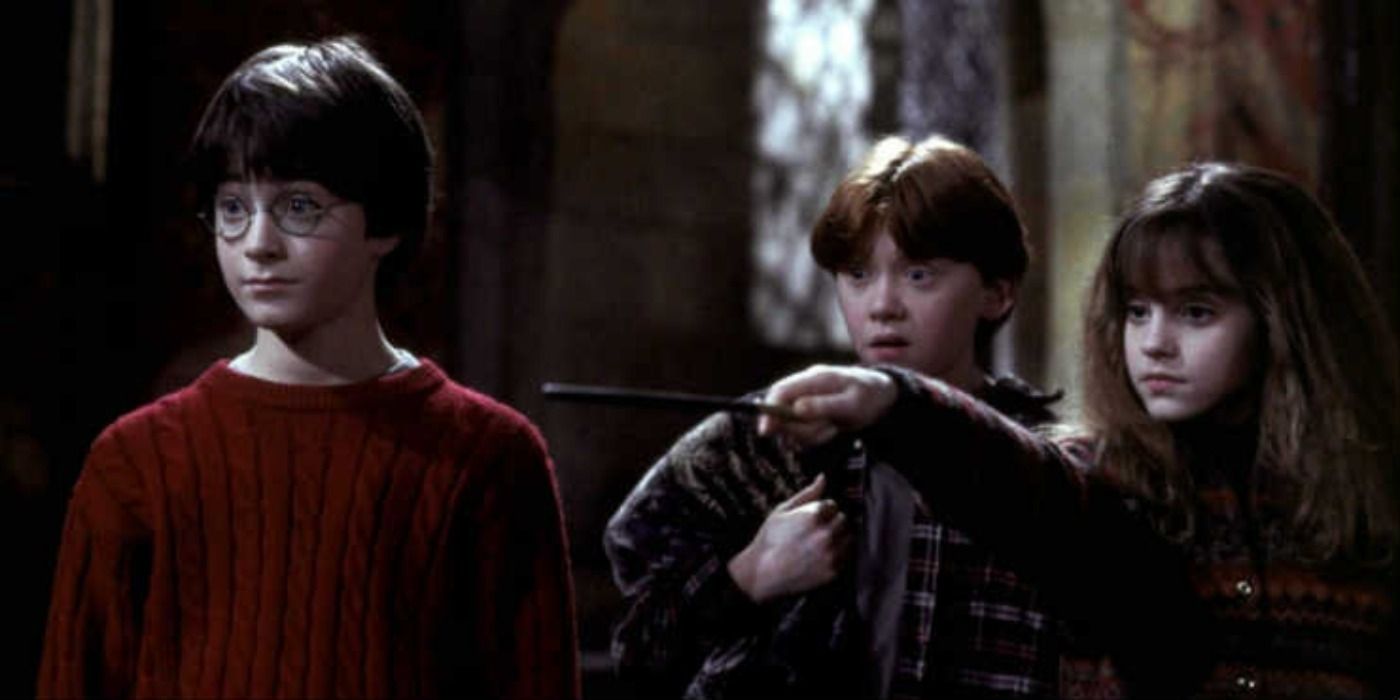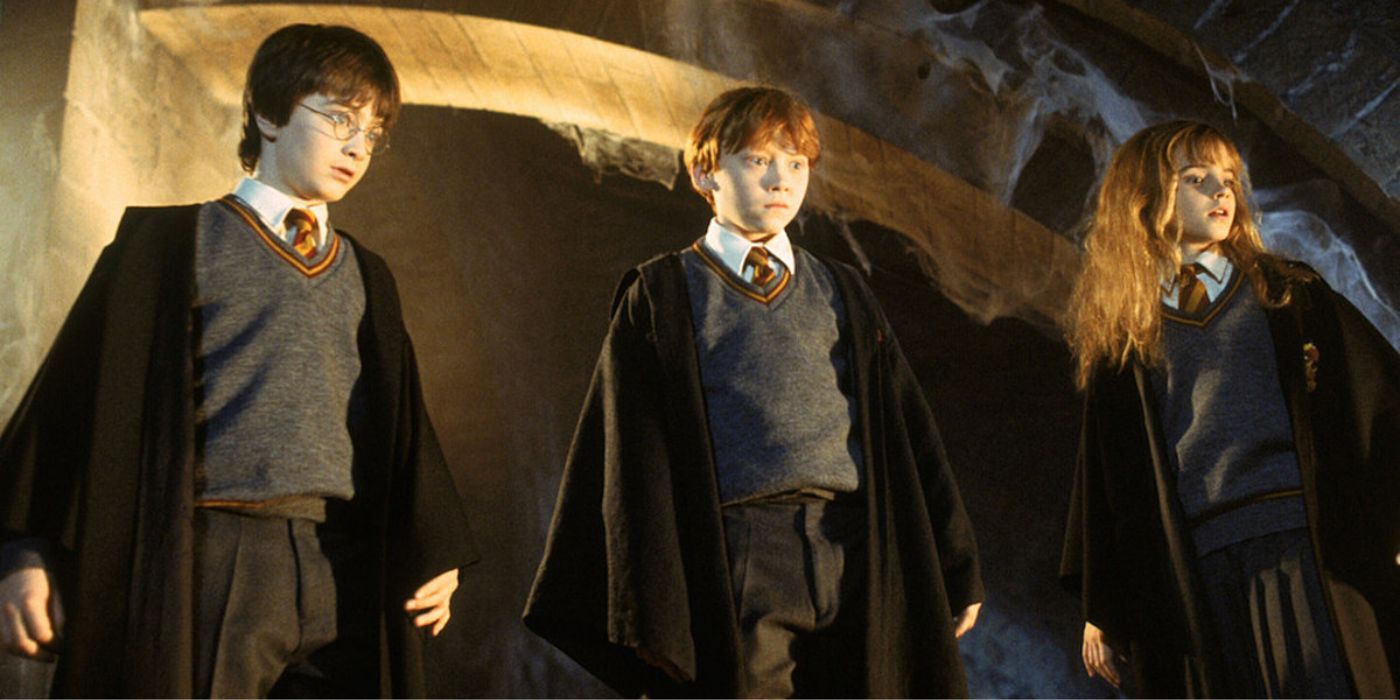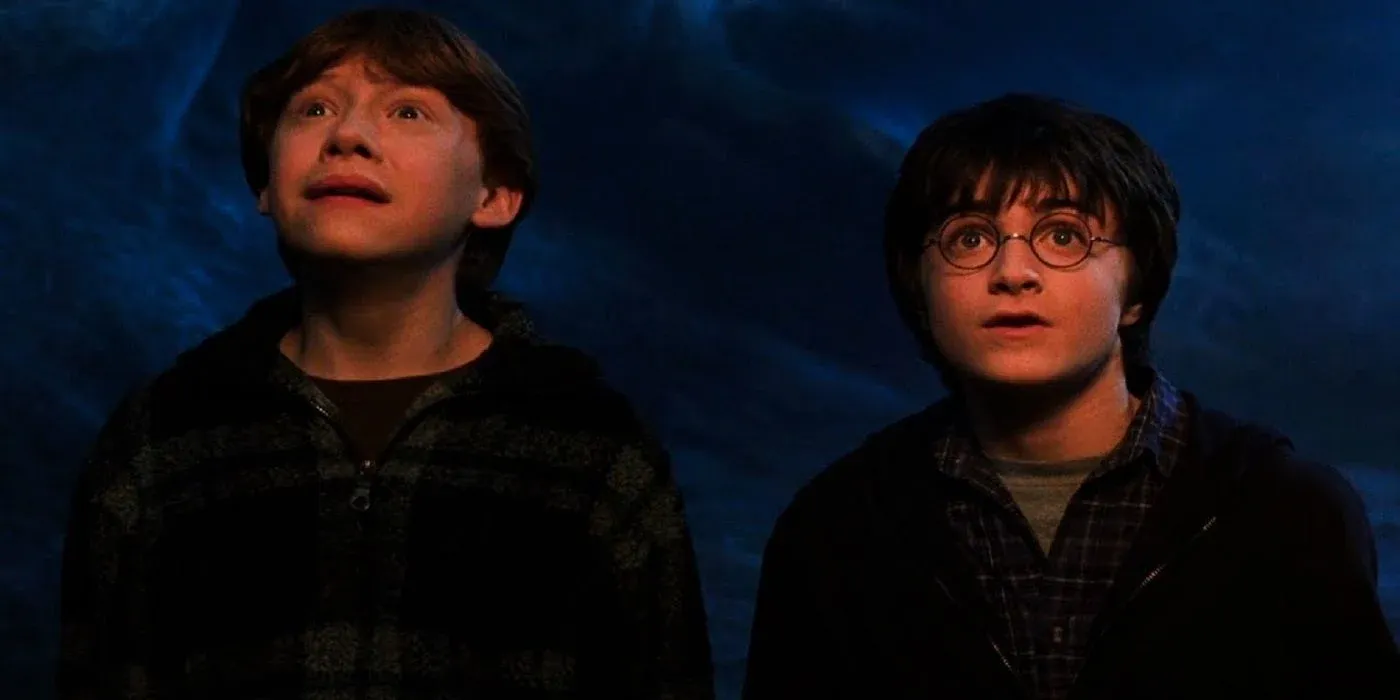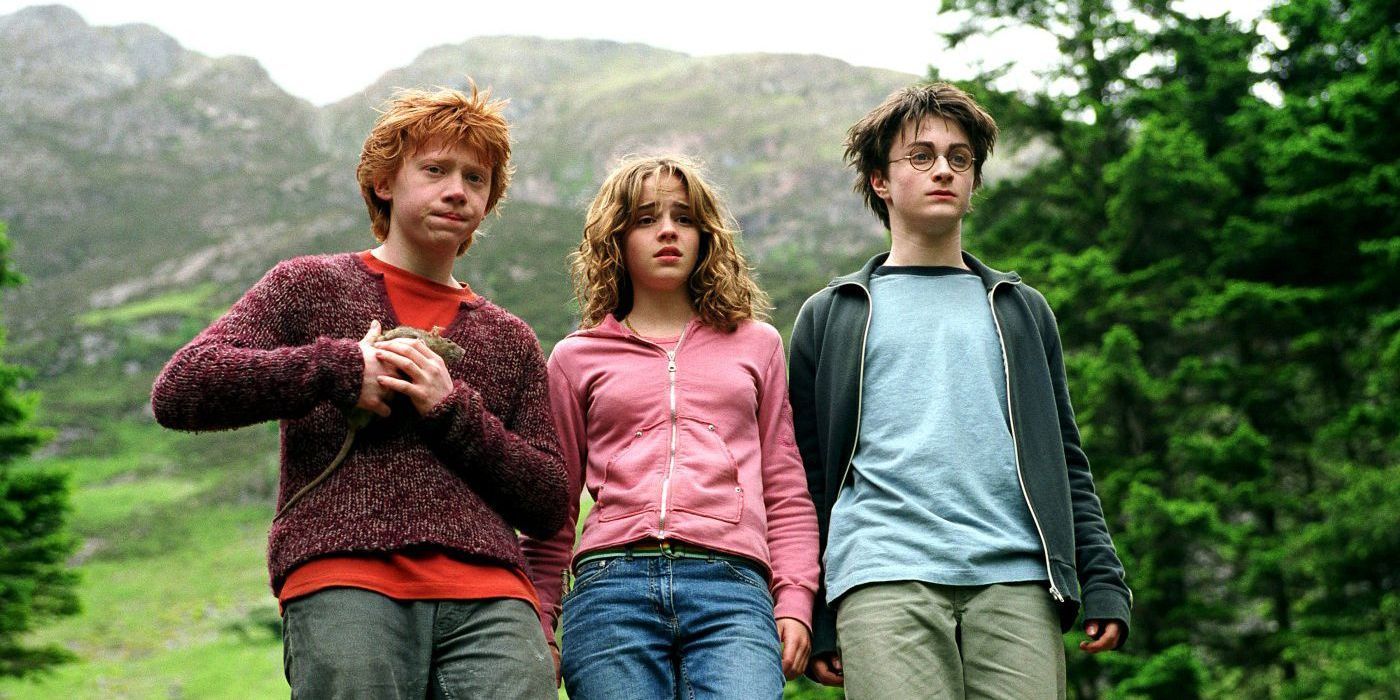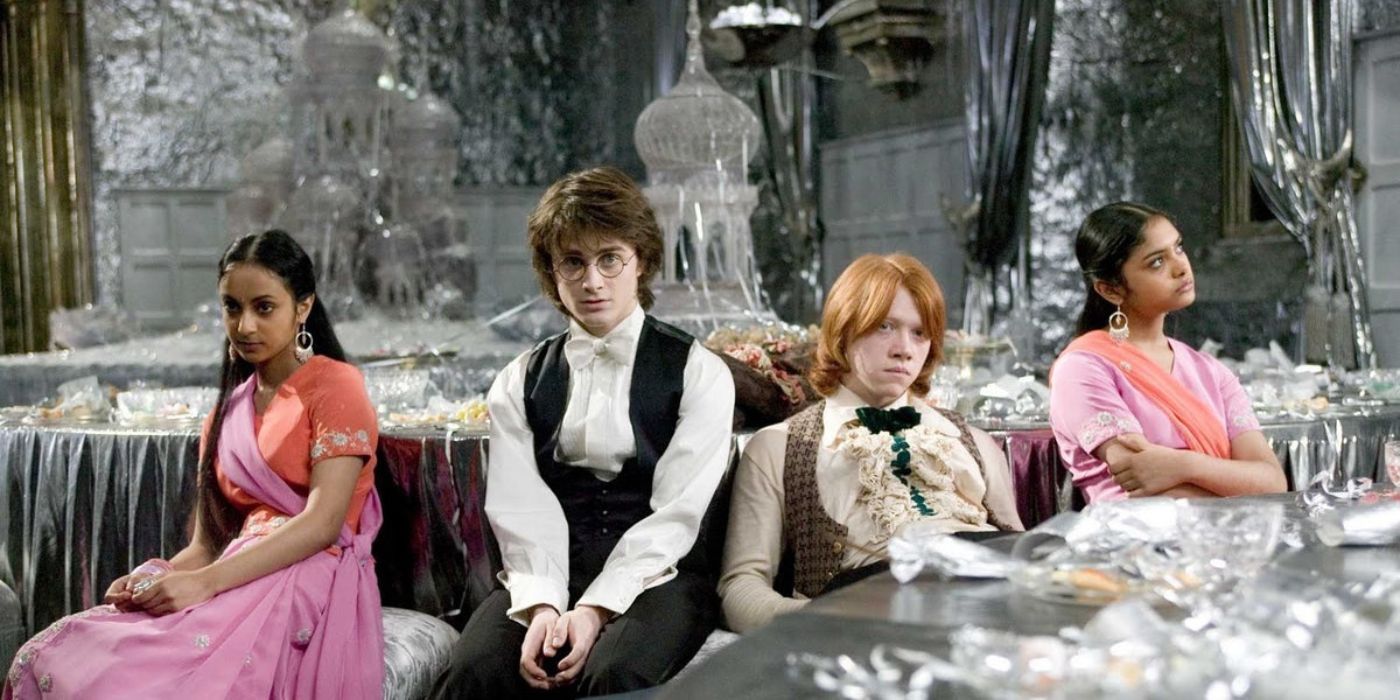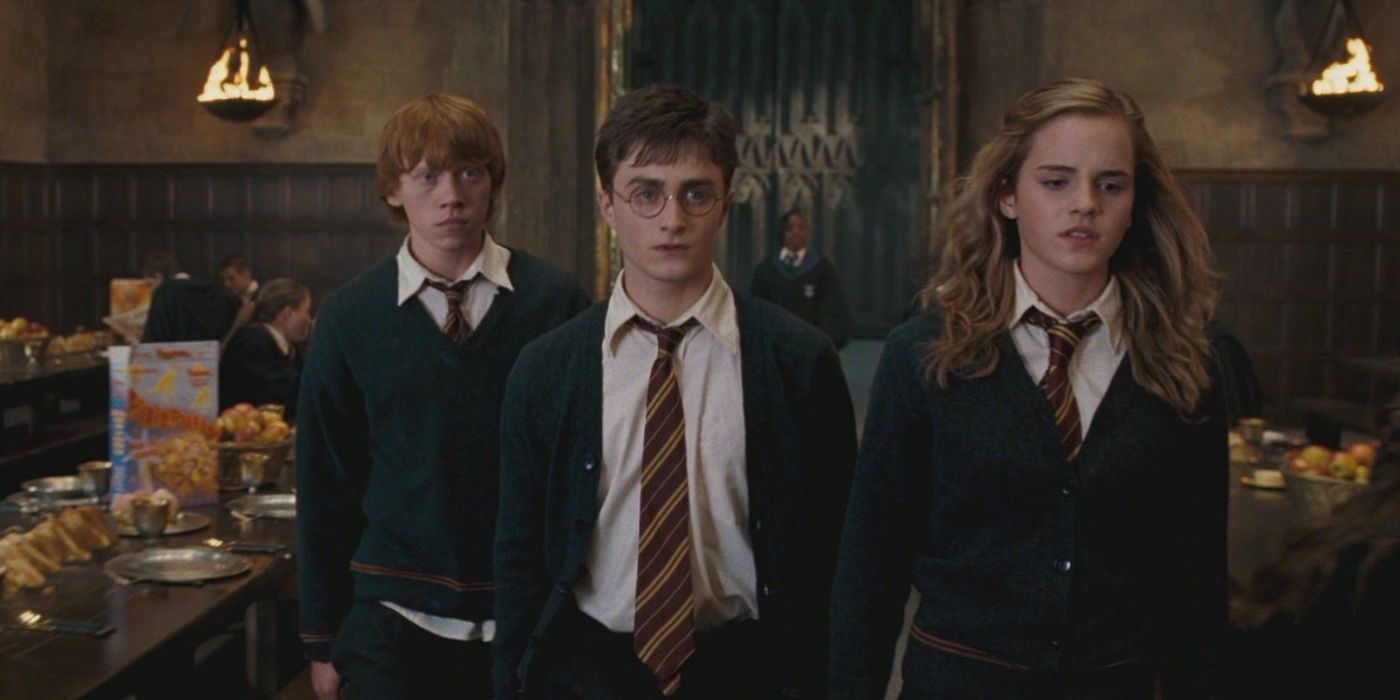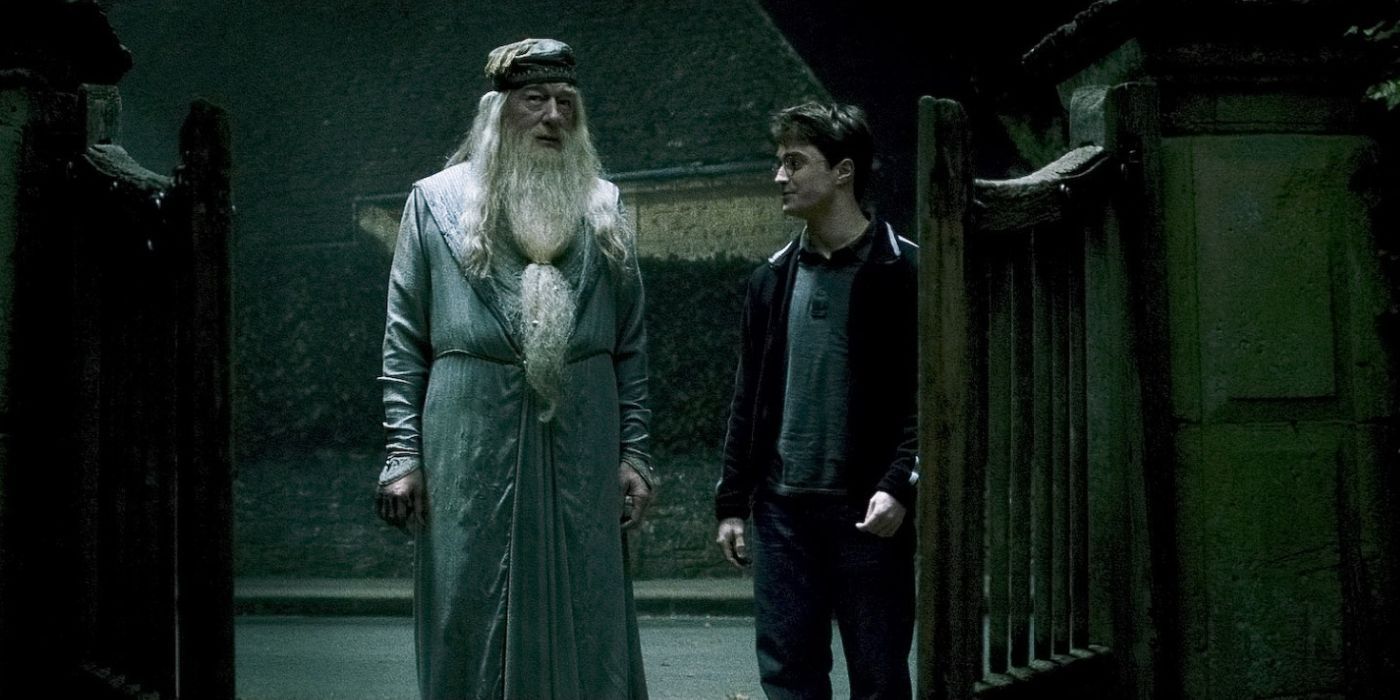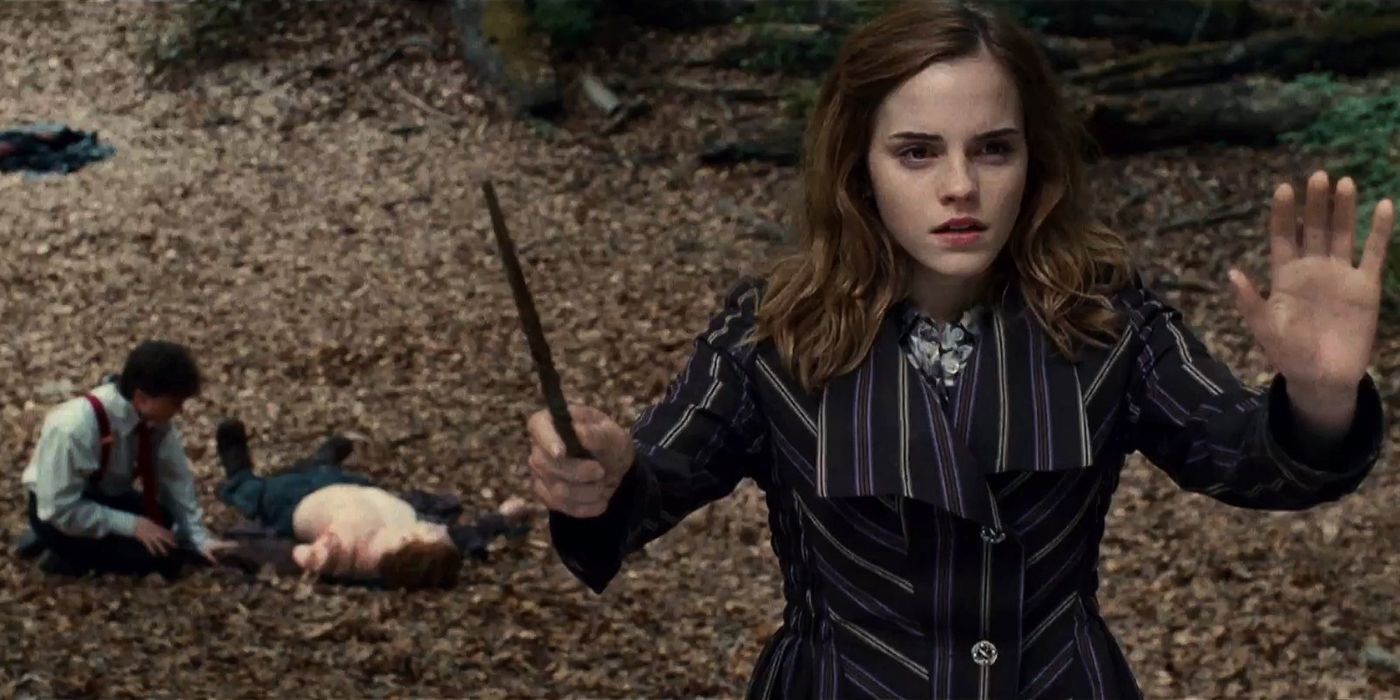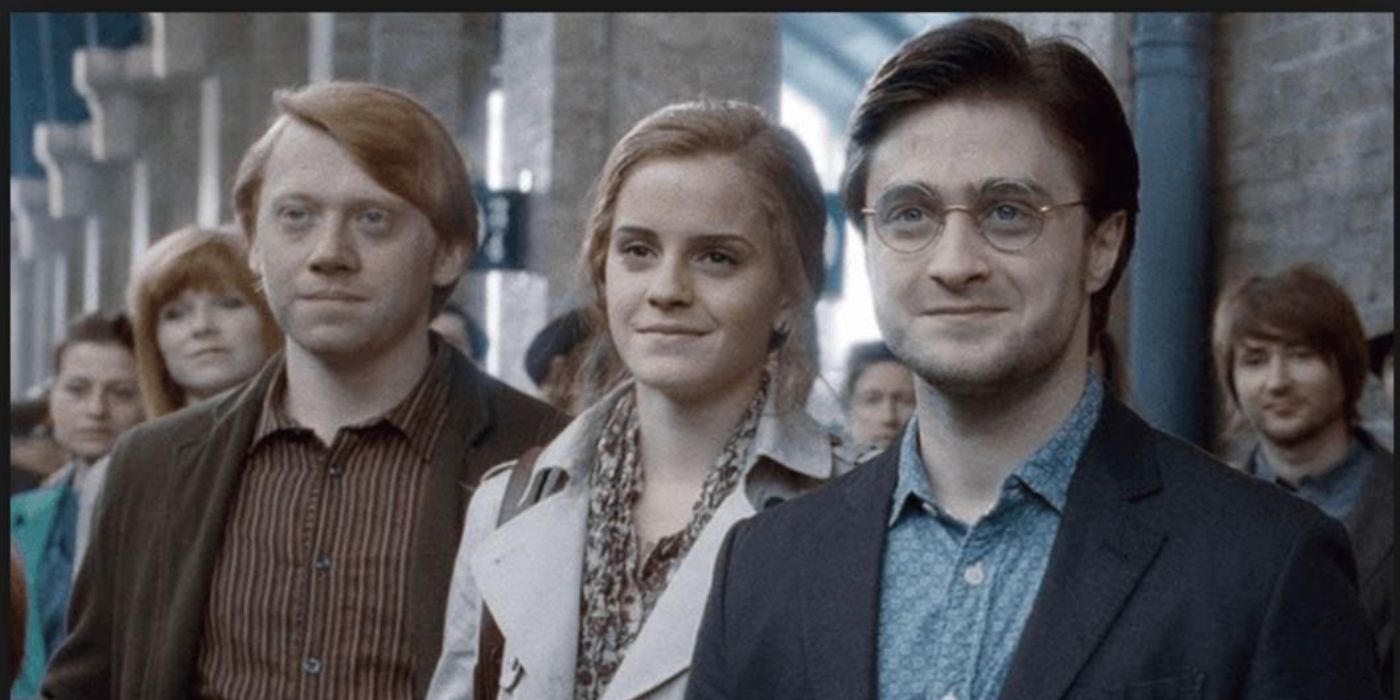Beginning in 2001, the successful film series Harry Potter appealed to millennials since they were the target audience for the first couple of novels in the series. After the first film was a massive hit, Harry Potter continued as a series, turning into a cultural phenomenon for millennials and their parents. Lines were out the doors for each new book release, as well as the movie premieres for every installment. Other successful franchises modeled their releases and production structures after the Harry Potter franchise, including splitting the final installment into two parts, as seen with Twilight and The Hunger Games.
Harry Potter and the Philosopher's Stone Was an Innocent Beginning
At the start of Harry Potter and the Philosopher's Stone, Harry had his 11th birthday after his uncle had done everything possible to block his invitation to Hogwarts School of Witchcraft and Wizardry. The story was fairly age-appropriate for fellow 11-year-olds, who were eager to see the film, and much of the first half involved introducing the audience to the Wizarding World. Harry made new friends, and the darkest part of the film came when Voldemort appeared on the back of Professor Quirrell's head. Voldemort was easily defeated, and the ongoing bond between them was introduced to the audience in a way that was consumable for children of a similar age.
Harry Potter and the Chamber of Secrets Gave Fans Horror
In Harry Potter and the Chamber of Secrets, the key trio became a little more rebellious at school and suffered more terrifying consequences than before. At the end of Harry Potter and the Philosopher's Stone, Harry faced Voldemort alone, and he had a similar fate in this film when he faced the basilisk by himself. This film upped the creature-feature element to the series, giving the viewers a giant spider and a giant snake to keep them awake at night. Harry, Ron and Draco Malfoy became stronger enemies, but their dislike for one another was still relatively tame compared to the darkness Malfoy eventually became.
Harry Potter and the Prisoner of Azkaban Shifted Darker
There was a break in production between Harry Potter and the Chamber of Secrets and Harry Potter and the Prisoner of Azkaban, but the franchise returned with a darker tone. Harry had more angst against his aunt and uncle as he entered his teenage years, and Harry's wishes became more complex as he wondered more about his parents and where he came from. There's a powerful moment in the film where Harry saves himself, indicating how people have to be their own heroes sometimes. He developed a strong bond with Professor Lupin and found a father figure in Sirius Black. The children also learned more about how the prison system in the Wizarding World worked, shedding some of the innocence they had in the first two films.
Harry Potter and the Goblet of Fire Focused on Social Structures in Adolescence
Social structures became a main theme in Harry Potter and the Goblet of Fire because Harry was isolated by his peers after his name appeared in the Goblet of Fire. There were competitions, balls and new characters that created a funny and entertaining story. The plot also had many more tragic elements to it, completely turning Harry's life upside down when he witnessed the death of Cedric Diggory. Harry experienced betrayal and loss in a new way in this movie, making the tone much darker than it was in the first two whimsical films, adjusting for the target audience who was growing with the films.
Harry Potter and the Order of the Phoenix Upped Harry's Angst
So far in the series, Harry had slowly developed more angst as the story unraveled, revealing a lot of complicated connections to Voldemort and his parents. At the start of Harry Potter and the Order of the Phoenix, Harry was isolated from his friends, and he grew angry and resentful in his loneliness. Harry experienced genuine anxiety and pain, but he took on more responsibility with the support of his friends as they assembled Dumbledore's Army. Harry's cynicism grew in this film even as he tried to protect his friends. He lost Sirius and decided his life was much too dangerous to put on anyone else, even though his friends reminded him he didn't have to do it all alone.
Harry Potter and the Half-Blood Prince Represented All Hope Lost
Harry wasn't in the best place emotionally or mentally in Harry Potter and the Half-Blood Prince. The connection between Harry and Voldemort became an important issue. There was darker magic in this movie, and Harry suffered another intense loss -- Dumbledore's death. Harry's will to live was dwindling, and Voldemort gained power from this. There were also more instances of torture in this movie, which made the content less than appropriate for the original target age for the series.
Harry Potter and the Deathly Hallows - Part 1 Forced the Trio to Grow Up
From the novels, most fans were prepared for the intense losses Harry would experience from the beginning of Harry Potter and the Deathly Hallows - Part 1. The first scene of the movie involved Hermione enchanting her parents so they'd have no memory of her. The film was completely different from the first six because they weren't in school anymore; they were out in the real world as adults who had to battle adult issues, continuing to stay relevant to millennials who went to see the movie.
Harry Potter and the Deathly Hallows - Part 2 Gave a Strong Goodbye
In the end, the biggest secret Dumbledore kept from Harry was what saved his life. Harry was killed and then reborn in Harry Potter and the Deathly Hallows - Part 2, and he finally defeated Voldemort. The evilness of the Dark Lord and his Death Eaters had increased throughout the films, and the strength of the characters had also grown, giving audiences a cathartic ending after a long decade of yearly releases. The ending was relatively sweet, even though there had been many losses to overcome, and the film left millennials with a strong goodbye as they embarked on the next journey in their personal lives.

